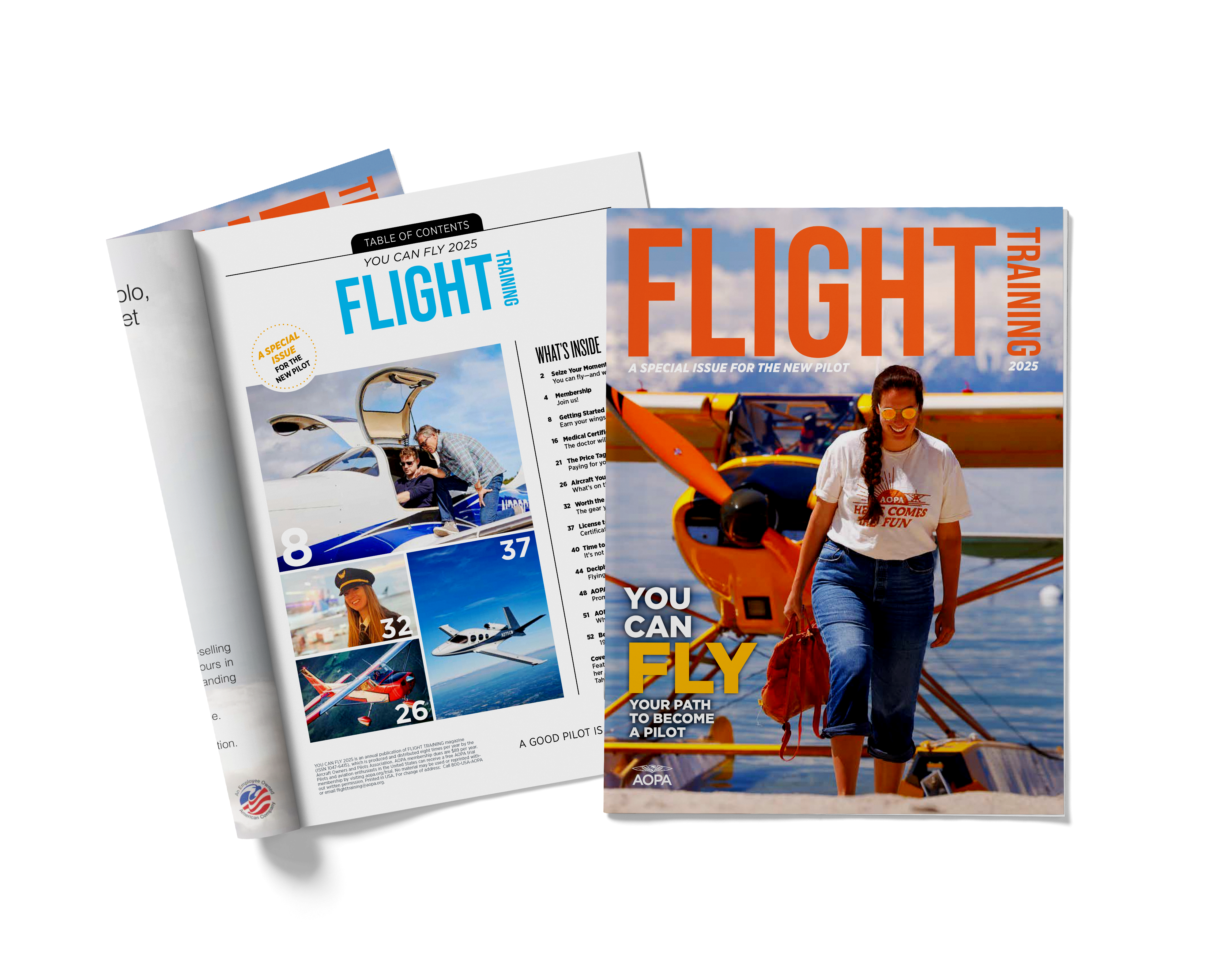Go Around
Do this if an approach or landing isn't working out
By Bruce Landsberg
It's called a go-around, a wave-off, an aborted landing, a missed approach, a rejected landing, or a bummer. Whatever you choose to call it, coming back for a second try at the runway is a skill that everyone needs but many lack.
Most pilots don't go around very often, and there are at least two reasons for that: We like landings and hate to waste an approach, or we're loathe to admit that things weren't working out the first time and worry that it might be perceived as incompetence. One thing is for certain: The safety record here could be much better.
There are several excellent reasons to reject a landing. The first is being too far down the runway to stop safely. The rule of thumb says that if the aircraft isn't on the ground in the first third of the runway — go around. If the speed or the alignment isn't right, go for the gas. There is always a chance to play again.
One of the tricky things about go-arounds is that the aircraft is trimmed for landing — not going around. On very light airplanes this isn't much of an issue because the pilot can overpower the pitch-up tendency when full power is applied. Fly something with muscle, however, and the pilot will need super strength to keep the nose from getting too high.
The go-around sequence is much the same for all aircraft: power, pitch, flaps, and gear. This will generally work on everything from trainers to twins. As the accident scenarios prove, however, many pilots don't know the drill, and the sequence is important.
Full power is the first thing needed to get the aircraft climbing, but how it's applied is just as important as when. I remember coaching a student on what turned out to be a memorable go-around when he jammed on full throttle. The engine made an ugly sound, stuttering, gasping, and finally emitting a great snarling "harrumph." As if to get even for being treated so shabbily, it then gave us exactly what we asked for — full power. All the torque and left-turning tendencies kicked in with a vengeance, so directional control became the issue of the moment. My student, usually ham-fisted with the throttle, was equally ham-footed — or, rather, dead-footed — with the rudder. More rudder sooner is much better than less rudder later. The maneuver eventually worked out, but not without some amusement for the spectators.
Next, the pitch attitude must be adjusted from landing to climb, with a transition through level. If the go-around occurs prior to the flare, raising the nose to level should arrest the descent. In many aircraft you'll need to hold the nose level with forward pressure to keep the airplane from attaining too high an angle of attack as power is added. That's another tricky thing about go-arounds — we want to go up but have to hold the nose down. A strong left arm is an essential part of a successful go-around.
The third item is to retract the flaps as recommended by the manufacturer. This usually means going to half or "approach" flaps. Single-engine Cessnas such as the 150 or 172 sometimes won't climb with 40 degrees of flap. On the later models, Cessna limited the travel to 30 degrees to give the pilot a little more performance, and that's usually what you get — a little more. The procedure is to retract the flaps immediately to 20 degrees and then go for climb airspeed. Remember that the deck angle — or pitch attitude, if you prefer — will be much lower than the normal no-flaps climb attitude. Once the aircraft has cleared the obstacle and has adequate speed, then retract the rest of the flaps.
Piper and Mooney flaps aren't quite as effective, so there is a bit more room to fumble, but we all take pride in doing it right. If the pilot retracts the flaps too quickly, there is usually a sinking spell and sometimes a stall; so, adding just enough back pressure to keep from sinking is something else to add to the skills list. On the Beech V35 Bonanza, the stall speed increases by about 12 knots as the flaps come up. On the Cessna 172, it's around seven knots; on the Piper Arrow, it's about five knots.
As soon as the power, pitch attitude, and flaps are set, retrim to take pressure off the control yoke. Want to see what it's like with full power, full flaps, and landing speed? Try a go-around at altitude. The control pressures may be surprisingly strong.
The last item is to raise the landing gear, if it's retractable. This is done only when the vertical speed indicator shows a positive climb so that if the aircraft should settle to the runway despite our best efforts, there's a only a minor delay in getting airborne again, which is preferable to experiencing a belly slide. On some aircraft the gear retraction sequence actually creates more drag as doors open to accept the wheels than if the gear were left down. In many aircraft the procedure is to wait until clear of the obstacle before starting the retraction cycle.
Here's an accident that illustrates almost everything that could go wrong with a go-around. A Cessna 182RG approached a 6,000 foot runway with 40 degrees of flaps. The heavily loaded aircraft bounced twice during the landing; the pilot, deciding to go around, applied full power. The aircraft was reported to be "wallowing" in ground effect; so, to reduce drag, the pilot raised the landing gear, but the Cessna settled onto the runway.
After the accident, the flaps were found to be fully retracted. The pilot believed that the flaps were accidentally retracted when the front passenger's knee came in contact with the flap switch during the first bounce. The six-foot-seven-inch passenger had trouble sitting in the aircraft comfortably and received a bruise on his left knee in a position that corresponded with flap switch.
The winds were less than 10 knots, but the pilot claimed wind shear. The FAA investigator didn't buy that scenario. The probable cause was listed as an improper flare with improper gear and flap usage in a go-around. In the heat of the moment, it's tempting just to grab the nearest switch to start cleaning up the airplane. But as previously discussed, the sequence and timing are critical when operating so close to the ground.
You don't have to wait until the aircraft is sliding sideways off the runway or bouncing 10 feet into the air before deciding that a particular landing is not worth the aggravation. Good go-arounds start early in a bad landing sequence. If it's not looking good halfway down final approach, go against your basic instincts and start on the road to recovery right then. Ask yourself, "When was the last time I did a go-around?" If every pilot did just one go-around for practice every 90 days, we could eradicate this accident cause.
Bruce Landsberg is executive director of the AOPA Air Safety Foundation.
You Can Fly !

This beginning pilots' resource guide explains what you can expect from your introductory flight through initial training— and how to turn your dream of flying into reality. Simply enter your name and email address.

